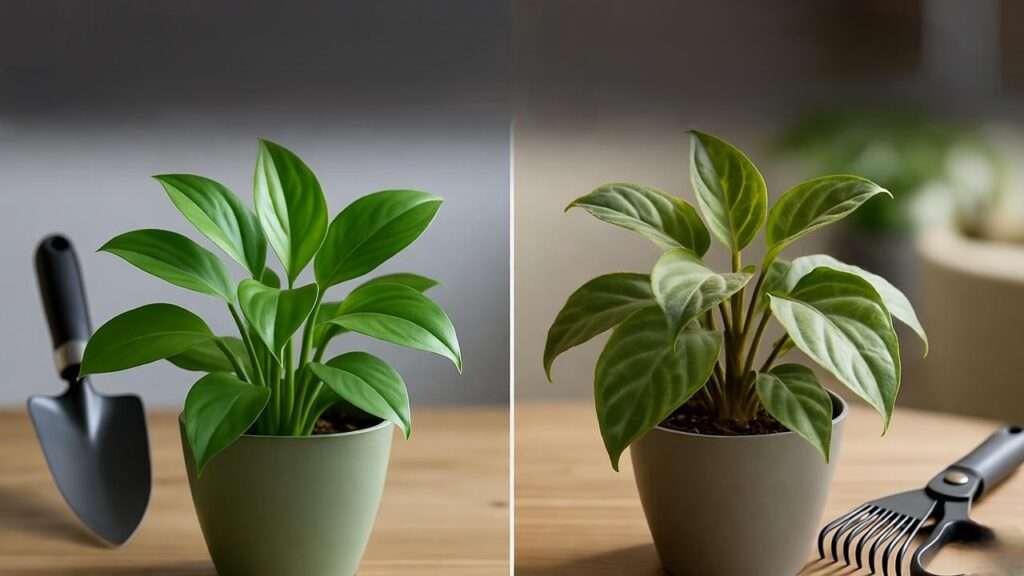Picture this: you’ve poured your heart into caring for your beloved houseplant, watering it faithfully, talking to it (we all do it!), and admiring its lush green leaves. But one morning, you notice a pile of leaves on the floor, and your plant looks sadder than ever. 😢 Plant shedding can feel like a personal betrayal, but don’t despair—it’s often a fixable issue! Whether you’re a seasoned plant parent or a newbie with a single pothos, leaf drop is one of the most common plant problems. The good news? With the right knowledge, you can diagnose the cause of plant shedding and nurse your greenery back to health.
In this comprehensive guide, we’ll uncover the seven most common reasons your plant is shedding leaves and share expert-backed solutions to restore its vibrancy. Drawing on decades of horticultural expertise and insights from leading botanical sources like the University of California Agriculture and Natural Resources, this article will empower you to tackle leaf drop like a pro. From overwatering mishaps to sneaky pests, we’ve got you covered with practical tips, real-world examples, and science-based fixes. Let’s dive in and save your plants! 🌿
Understanding Plant Shedding: What’s Normal and What’s Not? 🌿
What Is Plant Shedding?
Plant shedding, or leaf drop, occurs when a plant loses its leaves, either as part of its natural growth cycle or due to stress. Some shedding is perfectly normal—think of deciduous trees dropping leaves in autumn or older leaves falling from a healthy houseplant to make way for new growth. However, excessive or sudden leaf drop is your plant’s way of waving a red flag. 🚩 It’s like an SOS signal saying, “Help, something’s wrong!”
According to the Royal Horticultural Society, up to 80% of houseplant issues, including shedding, stem from improper care. Understanding whether your plant’s leaf drop is normal or a cry for help is the first step to fixing it.
Why Plants Shed Leaves
Plants shed leaves for various reasons, ranging from natural aging to environmental stressors. Seasonal shedding is common in outdoor plants like ficus or citrus trees, but indoor plants can drop leaves due to improper care, pests, or diseases. Factors like watering, light, humidity, and nutrition all play a role. By identifying the specific cause, you can take targeted action to stop the shedding and prevent future issues.
Expert Tip: Keep a plant journal to track symptoms like yellowing, wilting, or sudden leaf drop. This helps pinpoint patterns and causes over time. 📝
The 7 Common Causes of Plant Shedding and How to Fix Them 🌞
Cause 1: Overwatering – The Silent Plant Killer 💧
Overwatering is the number one cause of plant shedding for indoor plants. When roots sit in soggy soil, they suffocate, leading to root rot—a condition where roots decay and can no longer support the plant. This stress causes leaves to yellow and drop.
Symptoms: Soggy soil, yellowing or wilting leaves, mushy stems, or a musty smell from the pot.
Fix:
- Check the soil: If it’s consistently wet, let it dry out before watering again.
- Ensure proper drainage: Use pots with drainage holes and well-draining soil.
- Invest in a moisture meter (available for as little as $10) to gauge soil moisture accurately.
- Trim damaged roots if repotting, and reduce watering frequency.
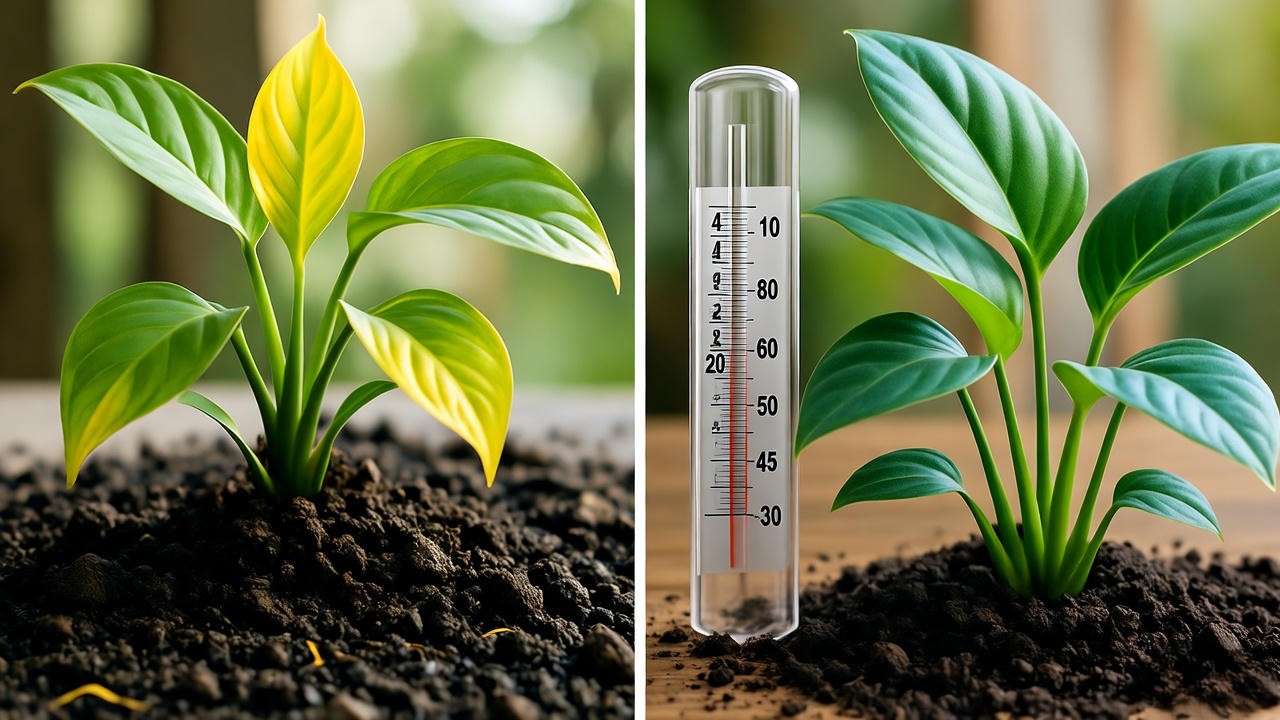
Example: Sarah, a plant enthusiast, noticed her peace lily dropping leaves despite frequent watering. After checking the soil, she found it waterlogged. By switching to a pot with better drainage and watering only when the top inch of soil was dry, her lily bounced back within weeks.
Expert Insight: A study from Cornell University’s Cooperative Extension notes that overwatering accounts for nearly 50% of houseplant deaths. Stick to a “less is more” approach for most plants.
Cause 2: Underwatering – When Your Plant Is Thirsty 🏜️
On the flip side, underwatering can also trigger leaf drop. When a plant doesn’t get enough water, it conserves resources by shedding leaves to reduce water loss.
Symptoms: Dry, crispy leaves, drooping stems, or soil that pulls away from the pot’s edges.
Fix:
- Establish a consistent watering routine based on your plant’s needs (e.g., weekly for snake plants, biweekly for succulents).
- Check soil moisture by sticking your finger an inch into the soil—if it’s dry, water thoroughly.
- Consider self-watering pots for forgetful plant parents.
Tip: Create a watering chart for your plants. For example:
| Plant Type | Watering Frequency | Notes |
|---|---|---|
| Monstera | Every 7–10 days | Keep soil slightly moist |
| Snake Plant | Every 2–3 weeks | Allow soil to dry out completely |
| Pothos | Every 7–14 days | Water when soil feels dry |
Cause 3: Improper Lighting – Too Much or Too Little ☀️
Light is a plant’s lifeblood, and getting it wrong can lead to shedding. Too little light causes weak, leggy growth, while too much direct sunlight can scorch leaves, prompting them to drop.
Symptoms: Leggy stems, pale or yellowing leaves (low light), or brown, crispy leaf edges (too much light).
Fix:
- Match your plant’s light needs: Low-light plants like pothos thrive in indirect light, while succulents need bright, direct sun.
- Move plants away from harsh south-facing windows or supplement with grow lights (e.g., LED grow lights starting at $20).
- Use a light meter or app to measure light intensity in your home.
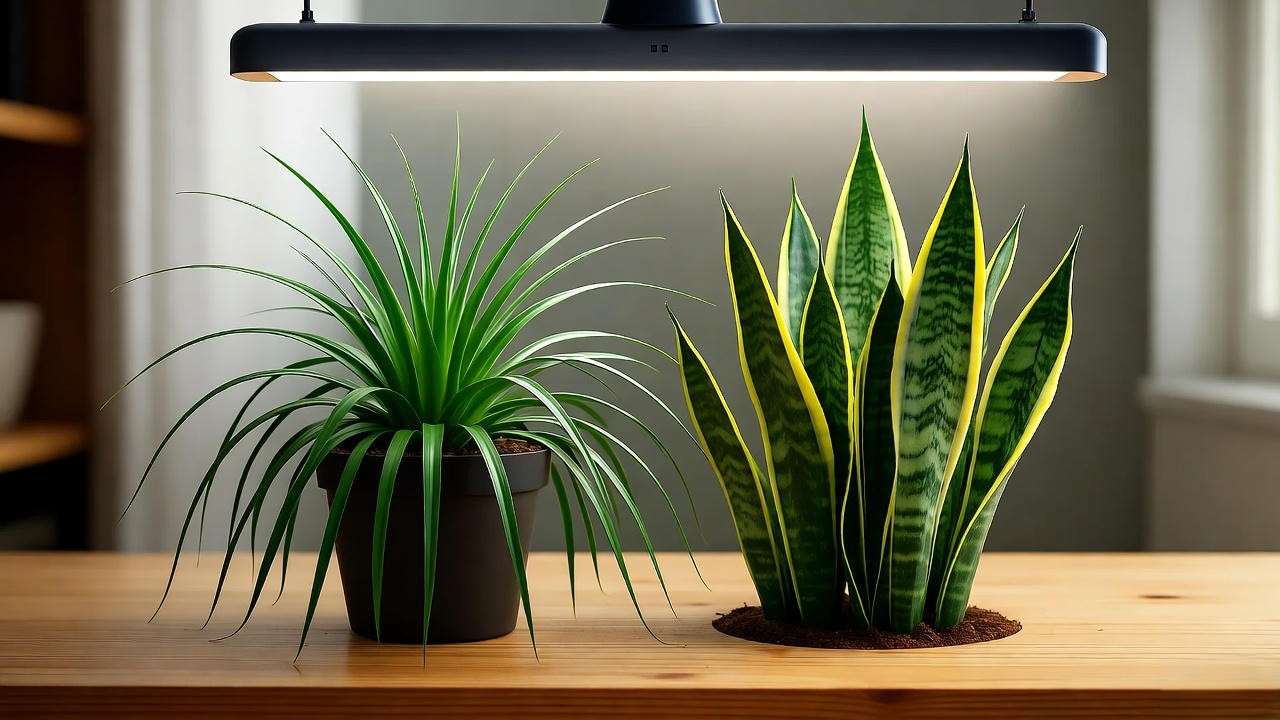
Tool Recommendation: The Planta app or a basic light meter can help you find the perfect spot for your plants.
Cause 4: Humidity Issues – Mimicking Your Plant’s Natural Habitat 💨
Many houseplants, like monsteras or calatheas, hail from tropical environments and need higher humidity (50–60%) to thrive. Low humidity, especially in winter or dry climates, can cause leaves to brown and drop.
Symptoms: Browning leaf tips, curling leaves, or dry, brittle foliage.
Fix:
- Use a humidifier to maintain 50–60% humidity.
- Group plants together to create a microclimate.
- Place a pebble tray filled with water beneath the pot to boost local humidity.
Expert Insight: Research from the University of Florida’s Institute of Food and Agricultural Sciences shows that tropical plants thrive best at 50–70% humidity, mimicking their native habitats.
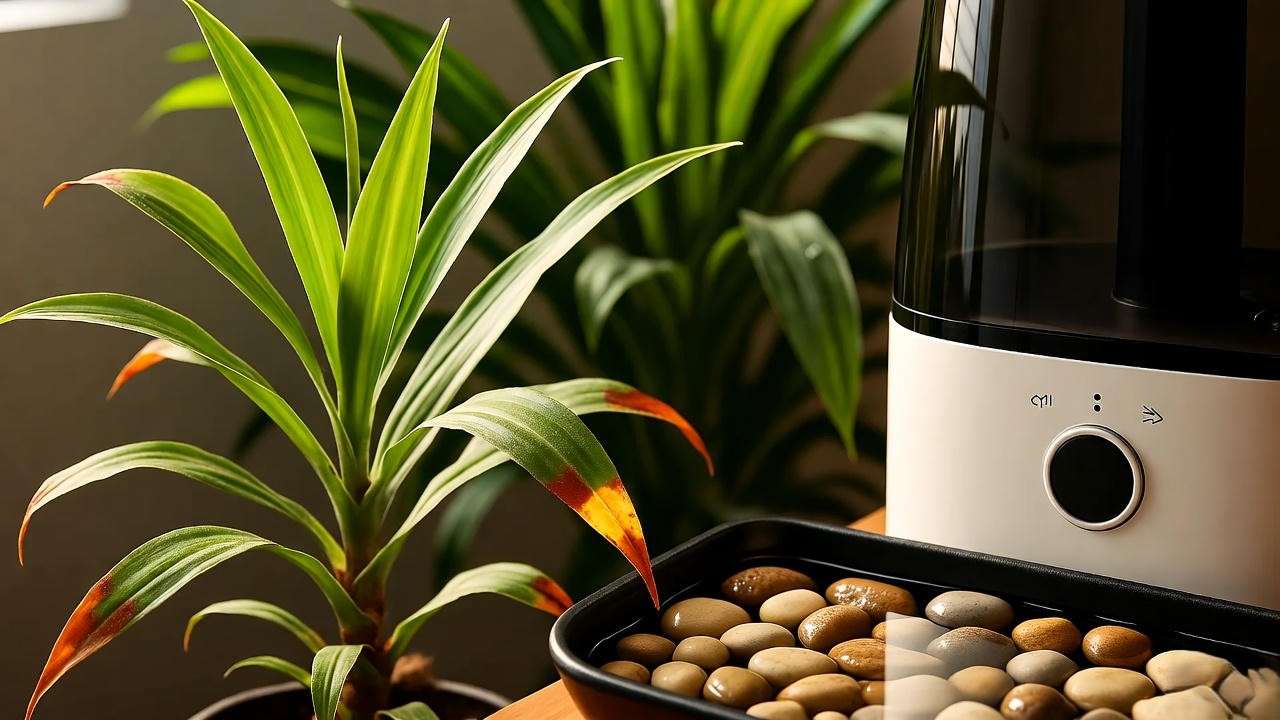
Cause 5: Nutrient Deficiencies – Starving Your Plant 🍽️
Plants need nutrients like nitrogen, phosphorus, and potassium to grow strong. A lack of these can weaken plants, leading to yellowing and shedding leaves.
Symptoms: Yellowing leaves, stunted growth, or weak, droopy stems.
Fix:
- Use a balanced liquid fertilizer (e.g., 10-10-10 NPK) every 4–6 weeks during the growing season.
- Avoid over-fertilizing, which can burn roots and worsen shedding.
- Test soil with a nutrient kit to identify deficiencies.
Example: John’s fiddle leaf fig was dropping leaves despite perfect light and water. A soil test revealed low nitrogen. After applying a balanced fertilizer, new growth appeared within a month.
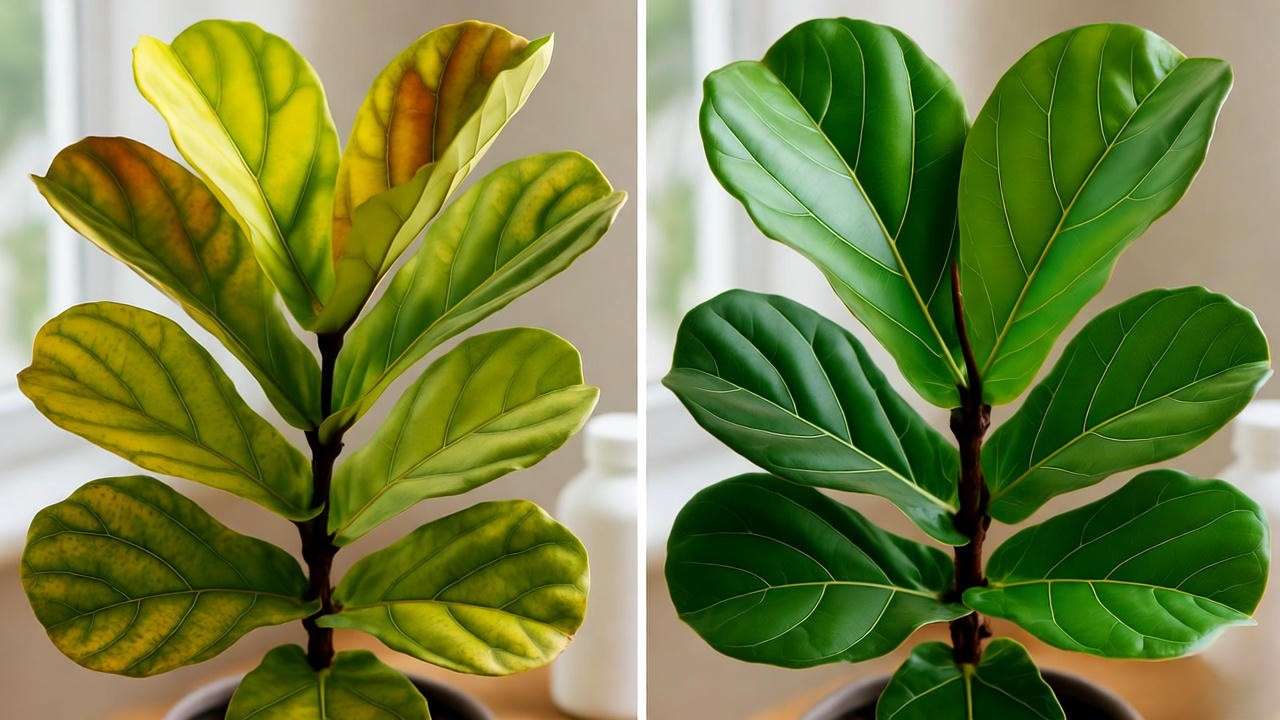
Cause 6: Pests and Diseases – Unseen Culprits 🐛
Pests like spider mites, aphids, or mealybugs, and diseases like powdery mildew, can stress plants and cause leaf drop.
Symptoms: Sticky residue, webbing, spotted or discolored leaves, or tiny bugs on stems.
Fix:
- Inspect plants weekly with a magnifying glass for early detection.
- Treat pests with neem oil or insecticidal soap (diluted as per instructions).
- Isolate affected plants to prevent spread.
- For fungal issues, improve air circulation and reduce overwatering.
Visual Aid: Check out close-up images of common pests like spider mites on gardening blogs or university websites to identify culprits.
Cause 7: Transplant Shock or Root Issues 🌱
Repotting or root-bound plants can experience transplant shock, leading to temporary leaf drop as they adjust.
Symptoms: Wilting or shedding post-repotting, roots circling the pot, or stunted growth.
Fix:
- Repot carefully, using a pot 1–2 inches larger with fresh, well-draining soil.
- Water lightly after repotting and place in indirect light to reduce stress.
- Check for root-bound conditions every 1–2 years.
Tip: Follow this repotting guide:
- Gently remove the plant from its pot.
- Trim dead or circling roots.
- Place in a new pot with fresh soil, ensuring good drainage.
- Water sparingly and monitor for a week.
How to Diagnose Plant Shedding Like a Pro 🔍
Diagnosing why your plant is shedding leaves can feel like solving a mystery, but with a systematic approach, you can pinpoint the issue like a seasoned botanist. Here’s a step-by-step process to identify the cause of plant shedding and get your greenery back on track. This method is inspired by diagnostic techniques used by professional horticulturists and backed by resources from institutions like the Missouri Botanical Garden.
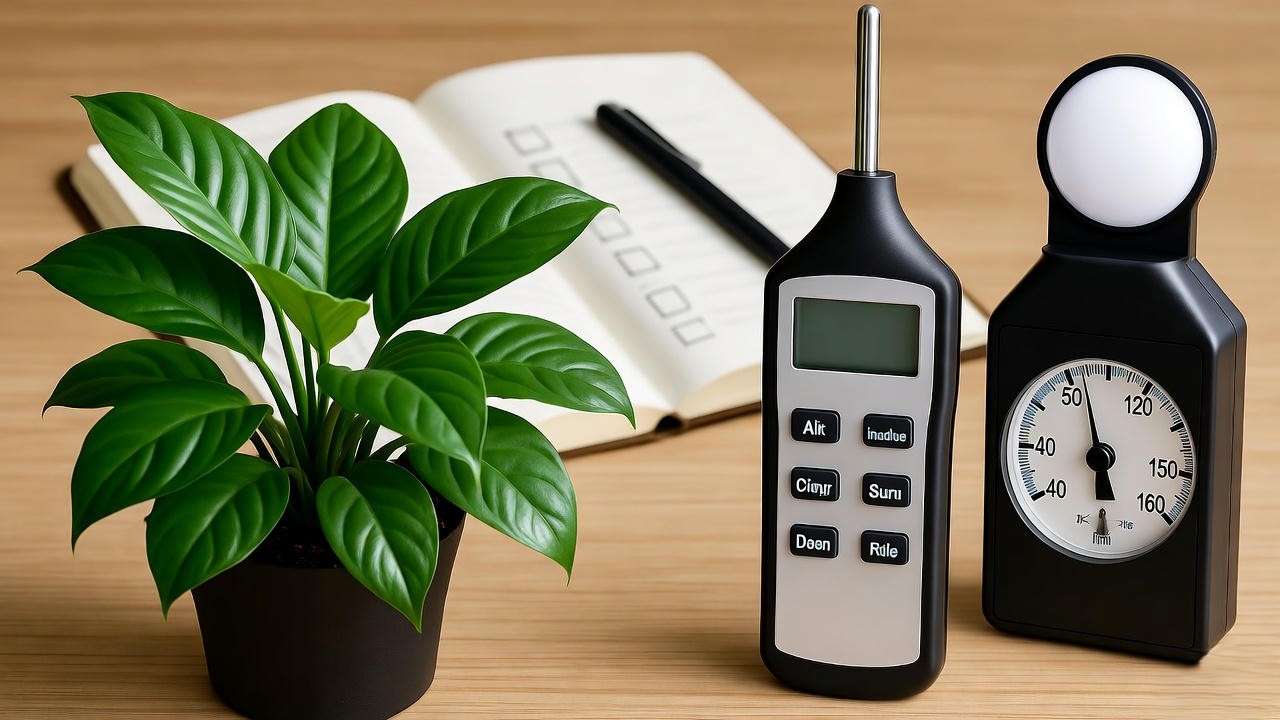
Step 1: Check Soil Moisture
Overwatering and underwatering are the top culprits of leaf drop. Stick your finger about an inch into the soil:
- If it’s soggy: Overwatering is likely the issue. Let the soil dry out and check for root rot.
- If it’s bone-dry: Your plant is thirsty. Water thoroughly and establish a consistent schedule.
Pro Tip: A moisture meter (available for $10–$20 online) takes the guesswork out of watering.
Step 2: Assess Light Conditions
Light issues are a common cause of shedding. Observe your plant’s environment:
- Too little light: Look for leggy growth, pale leaves, or slow growth. Move the plant to a brighter spot with indirect light or use a grow light.
- Too much light: Scorched, crispy leaves or faded colors suggest excessive direct sun. Relocate to a spot with filtered light or use sheer curtains.
Tool Suggestion: Apps like Planta or Lux Light Meter can measure light intensity to ensure your plant gets the right amount.
Step 3: Inspect for Pests or Diseases
Pests and diseases can sneak up on even the most attentive plant parents. Use a magnifying glass to check for:
- Tiny bugs (e.g., spider mites, aphids) or sticky residue.
- Webbing, spots, or powdery coatings on leaves.
If you spot trouble, isolate the plant and treat it with neem oil or insecticidal soap. For fungal issues, improve air circulation by spacing plants apart or using a small fan.
Step 4: Evaluate Humidity and Nutrients
Low humidity or nutrient deficiencies can stress plants, leading to shedding.
- Humidity: Check for browning leaf tips or curling leaves. Use a hygrometer to confirm humidity levels (ideal is 50–60% for most houseplants). Boost humidity with a humidifier or pebble tray.
- Nutrients: Yellowing leaves or stunted growth may indicate a lack of nutrients. Test your soil with a nutrient kit or apply a balanced fertilizer (e.g., 10-10-10 NPK) every 4–6 weeks during the growing season.
Downloadable Resource: Create a Plant Shedding Diagnostic Checklist to track symptoms. Include questions like:
- Is the soil too wet or dry?
- Are leaves yellow, crispy, or spotted?
- Is the plant in the right light conditions?
This checklist can be a handy PDF download for readers to print and use.
Expert Insight: Botanists at the University of California, Davis, emphasize that a systematic diagnosis—starting with water, then light, pests, and environment—resolves 90% of plant shedding cases.
Preventing Plant Shedding: Long-Term Care Tips 🌟
Prevention is the best cure for plant shedding. By creating an optimal environment and maintaining a consistent care routine, you can keep your plants healthy and vibrant. Here’s how to set your greenery up for success.
Creating the Perfect Environment
Plants thrive when their environment mimics their natural habitat. Focus on these key factors:
- Light: Match your plant’s light needs. For example, low-light plants like ZZ plants tolerate dim corners, while cacti need bright, direct sun. Rotate plants every few weeks for even growth.
- Humidity: Maintain 50–60% humidity for tropical plants. In dry climates or winter, use a humidifier or group plants together to create a humid microclimate.
- Temperature: Keep plants away from cold drafts or hot radiators. Most houseplants prefer 65–75°F (18–24°C).
Tool Recommendation: A smart plant monitor like the Xiaomi Flower Care Sensor tracks light, humidity, temperature, and nutrients, sending alerts to your phone.
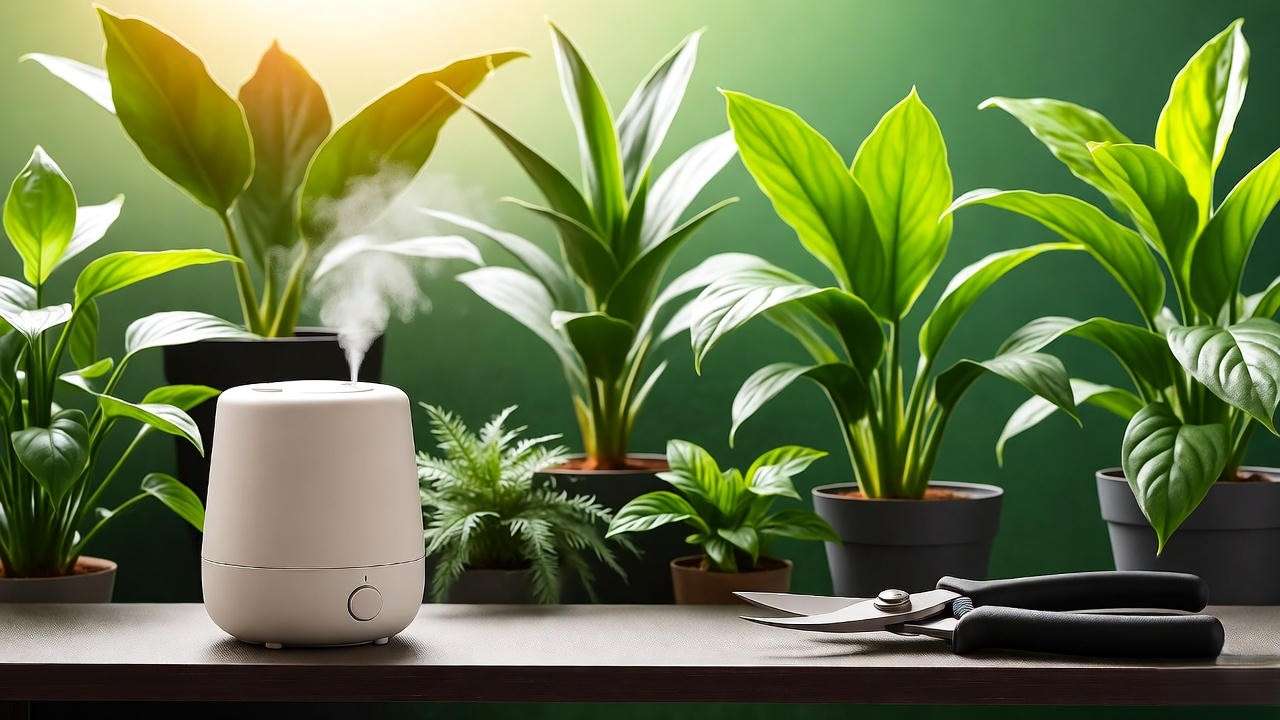
Routine Maintenance for Healthy Plants
Regular care prevents stress that leads to shedding. Incorporate these habits:
- Pruning: Trim yellow or dead leaves with clean scissors to encourage new growth.
- Cleaning: Wipe dusty leaves with a damp cloth to improve photosynthesis.
- Pest Checks: Inspect plants weekly for pests, especially under leaves and in crevices.
- Fertilizing: Feed plants every 4–6 weeks during spring and summer, pausing in fall and winter.
Monthly Plant Care Checklist:
- Check soil moisture and water as needed.
- Rotate plants for even light exposure.
- Inspect for pests or diseases.
- Clean leaves and prune dead foliage.
- Monitor humidity and adjust if necessary.
Choosing the Right Plants for Your Space
Prevent shedding by selecting plants suited to your home’s conditions. Low-maintenance plants are less likely to drop leaves due to care mistakes. Here’s a quick guide:
| Plant | Light Needs | Watering | Shedding Risk |
|---|---|---|---|
| Pothos | Low to bright indirect | Every 7–14 days | Low |
| Snake Plant | Low to bright | Every 2–3 weeks | Very low |
| ZZ Plant | Low to medium | Every 2–4 weeks | Very low |
| Monstera | Bright indirect | Every 7–10 days | Moderate |
Tip: If you’re new to plant care, start with forgiving plants like pothos or snake plants to build confidence.
When to Seek Professional Help 🩺
While most plant shedding issues can be resolved at home, some cases require expert intervention. Consider consulting a professional if:
- Your plant continues shedding despite addressing water, light, and pests.
- You suspect severe root rot or a rare disease like phytophthora.
- You’re dealing with a valuable or sentimental plant, like a bonsai or heirloom tree.
Resources:
- Local plant clinics or university extension programs (e.g., Cornell Cooperative Extension).
- Online communities like Reddit’s r/houseplants or the Plant Parent Club on Facebook.
- Professional arborists for outdoor trees or large indoor specimens.
Expert Tip: Join a local gardening club or online forum to share photos and get tailored advice from experienced growers.
FAQs About Plant Shedding ❓
Is it normal for my plant to lose a few leaves every week?
A few leaves dropping occasionally is normal, especially for older foliage. However, if multiple leaves fall weekly or new growth is affected, investigate water, light, or pest issues.
How do I know if my plant is shedding due to pests or overwatering?
Check the soil first: soggy soil points to overwatering, while dry soil suggests underwatering. Inspect leaves and stems for pests (e.g., webbing or sticky residue). Use a magnifying glass for tiny critters like spider mites.
Can a plant recover from severe leaf drop?
Yes, most plants can recover if the root system is intact and you address the underlying issue. Be patient—recovery may take weeks to months.
Should I cut off shedding leaves or let them fall naturally?
Trim yellow or dead leaves with clean scissors to prevent disease and encourage new growth. Leave healthy leaves to fall naturally if they’re part of seasonal shedding.
How long does it take to fix plant shedding issues?
Recovery time varies by cause. Overwatering fixes may take 2–4 weeks, while pest treatments can show results in days. Consistent care is key.
Conclusion – Keep Your Plants Thriving! 🌿
Plant shedding can be alarming, but it’s rarely a death sentence for your greenery. By addressing the seven common causes—overwatering, underwatering, improper light, low humidity, nutrient deficiencies, pests, or transplant shock—you can revive your plants and prevent future leaf drop. Use the diagnostic checklist to pinpoint issues, adopt a proactive care routine, and choose plants that match your lifestyle. With these expert-backed strategies, your houseplants will thrive, filling your home with lush, vibrant greenery.
Have a plant shedding success story? Share it in the comments or on social media with #PlantSheddingFix! 🌱 Want to dive deeper? Check out our related guides on watering routines, pest control, or low-maintenance houseplants for more tips to keep your plants happy.

